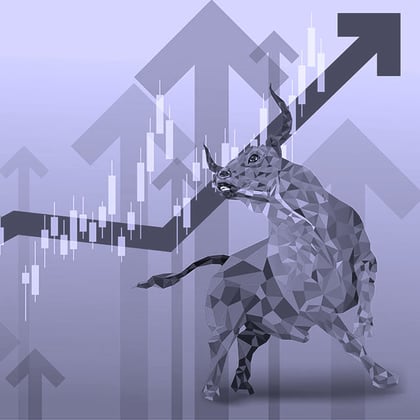What You Need to Know
- Earnings forecasts for S&P 500 in 2022 rose $1 to $220.40 a share in the last month.
- The pace of 2021's 27% rise in the index has matched the rise in earnings.
- Rising inflation has mostly been a headwind for large-cap companies.
Wondering how U.S. stocks can keep going up in the face of a newly hawkish Federal Reserve and a fast-spreading omicron variant? The answer once again is uncanny resilience in the key measure of American corporate health.
As scary as all the headlines have been, they have yet to enact any appreciable harm on forecasts for S&P 500 earnings. Rather than fall, as case counts climb and the global recovery comes under increasingly worrisome threats, estimated 2022 income for firms in the index actually climbed about $1 to $220.40 a share in the last month.
It’s possible that analysts have just been slow cutting numbers as the post-pandemic rally approaches its third year. Certainly, some money managers have raised cash holdings and cut equity exposure in anticipation of a worsening economy.
But bulls are acting as though stable profit estimates are believable and unlikely to change. In a year rife with antagonists, from waves of coronavirus outbreaks to supply chain bottlenecks, it’s record earnings per share that kept the bull case intact.

“Healthy economic and EPS growth acts as a foundation under a market which is driven by chronic fears,” said Jim Paulsen, chief investment strategist at Leuthold Group, who expects 2022 profits to come in at $240 a share.
“You can be worried about Covid, inflation, the Fed, China, Robinhood, SPACs, valuations, etc. But every quarter, EPS keep coming in better than expected, forcing the consensus to upgrade forecasts. And this brings ‘dip buyers’ whenever we have any meaningful pullback,” he added.
Investor nerves were tested in December when Fed Chair Jerome Powell announced plans to end the central bank’s asset-buying program earlier and signaled rate hikes for 2022 to fight inflation.
Prospects for higher rates and slower growth sparked a quick exodus from risky assets. Technology firms that are unprofitable bore the brunt of selling. So did shares of newly public companies, many of which have yet to make money.
But the S&P 500, tracking large and established firms, has stood relatively firm, hovering within 4% of its all-time high thanks to strength on the bottom line. While the index’s 27% rally struck many as hard to explain, the pace of its appreciation has roughly matched the increase in the estimated earnings this year.









 December 28, 2021 at 10:59 AM
December 28, 2021 at 10:59 AM













